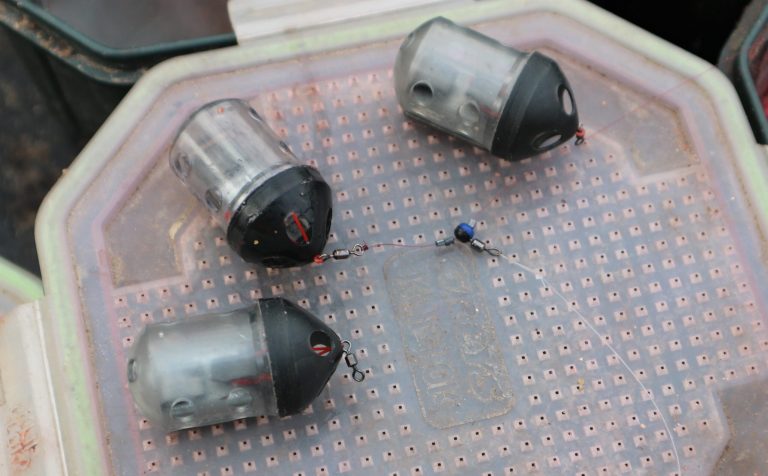EARLY DAYS
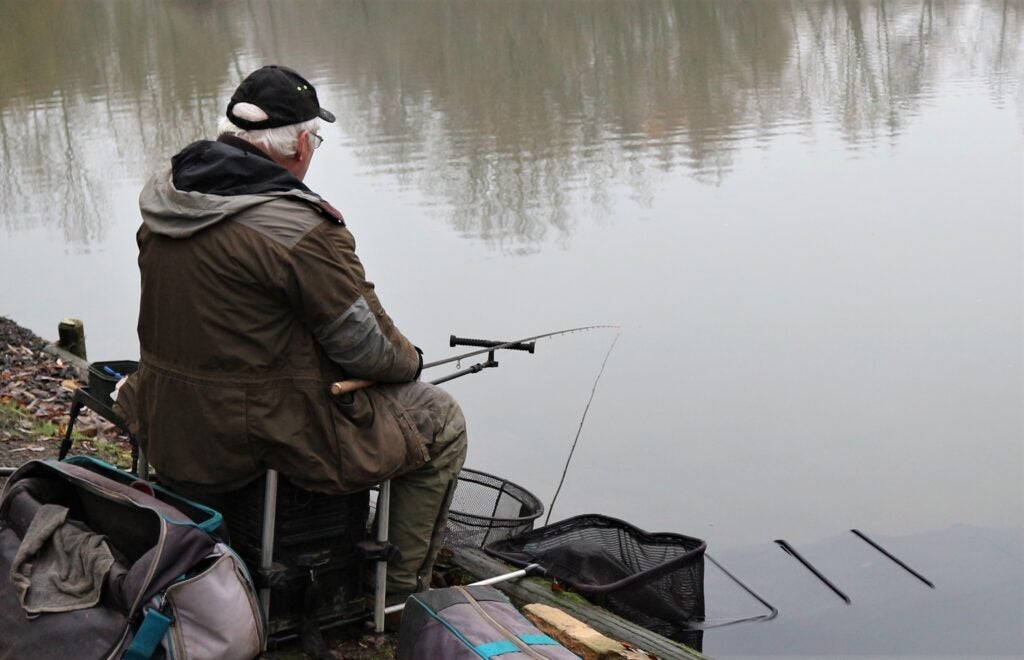
With temperatures barely hovering above freezing point and my local lakes shrouded in mist, it was a good time to look at helicopter rigs again. Last winter, in combination with maggot feeders, this method proved it can pull bites in cold weather when everything else is failing. I made a few mistakes when first getting to grips with helicopter set-ups. I initially tried the technique the traditional specimen way, but quickly concluded I wasn’t keen on heavy-duty self-hooking rigs. I began experimenting by going lighter with a more match-orientated approach. The main problem I found with using big heavy feeders, ultra-short hook lengths and stiff quivertips, was the bolt rig effect it created. This might be good at self-hooking fish, but not so good if they kept coming off on the way in, which often happened with soft-mouthed species like roach and skimmers. I gradually began to refine everything, but knew more work was needed.
TWEAKING IT
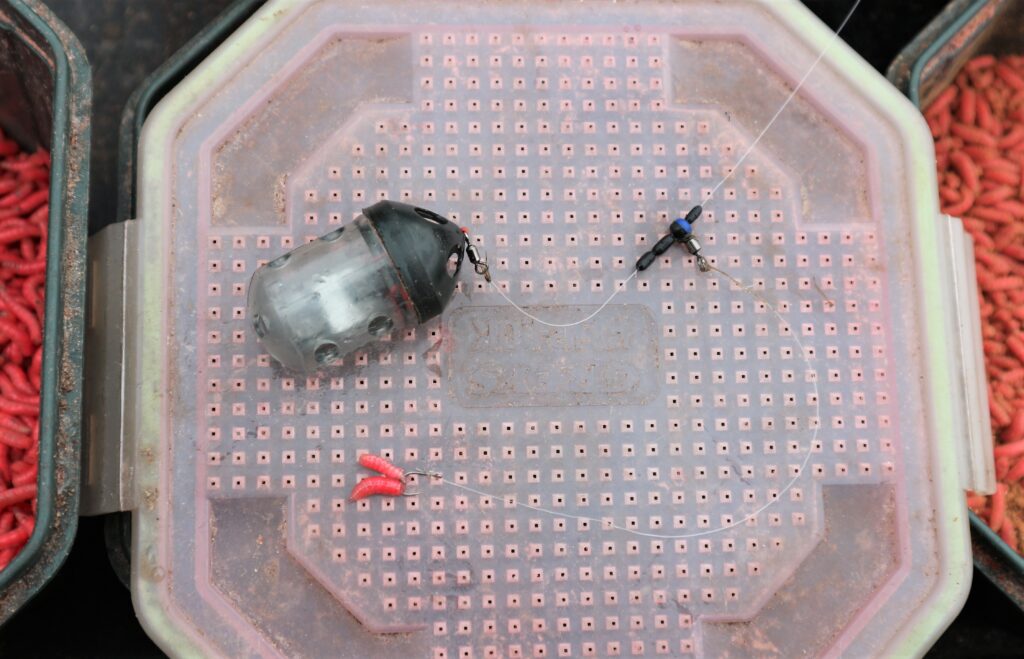
This is the set-up I arrived at after several sessions, but it still wasn’t quite right. The Kamasan Black Cap maggot feeder was okay, as was the format, which didn’t tangle when using slightly longer 6 inch hook lengths. The latter helped to prevent bumping the hook out of too many fish. But using low diameter line, even quite a strong gauge, meant I had to combine it with eyed hooks. I tried spades but they didn’t work very well on short traces, tending to cut through thin rig mono when put under pressure. I was also using the new breed of rubber line stops with extra grip, positioning two below a swivel bead and one above. These didn’t move throughout entire sessions, which originally I thought was good, but more about that later. By using lighter 20g feeders, I discovered I could switch to a more sensitive 1oz quivertip. Very often takes were so savage they dislodged the feeder anyway, so I couldn’t see the point of stiffer 2oz or 3oz indicators.
KICK-STARTING
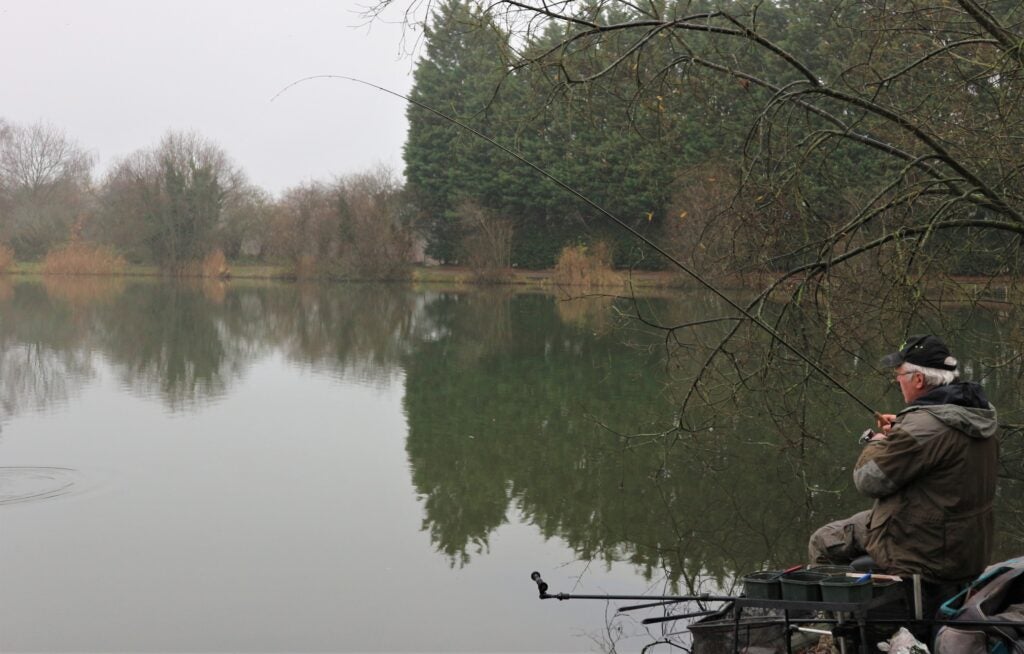
Regularly casting a maggot feeder out into deep, extremely cold water, was bringing me a response a lot quicker than float or groundbait feeder tactics. Even lethargic fish couldn’t resist having a go when neat maggots were constantly falling in their midst. It normally takes an hour to gain some interest, as opposed to using float gear which, in the depths of winter, often only comes to life when the fish become more active as the light fades. I don’t put lots of grubs in, preferring to feed small amounts regularly to stir a response. Last winter I found Black Caps released maggots a lot faster than most other blockend designs. Also, by using the smallest size, I only get through around a pint of bait during busy sessions. On this occasion I spent the first hour casting every five minutes and it took exactly an hour for the first savage take. I was expecting roach, but the first fish was too sluggish, thumping hard against the rod on the way in.
MINT FISH
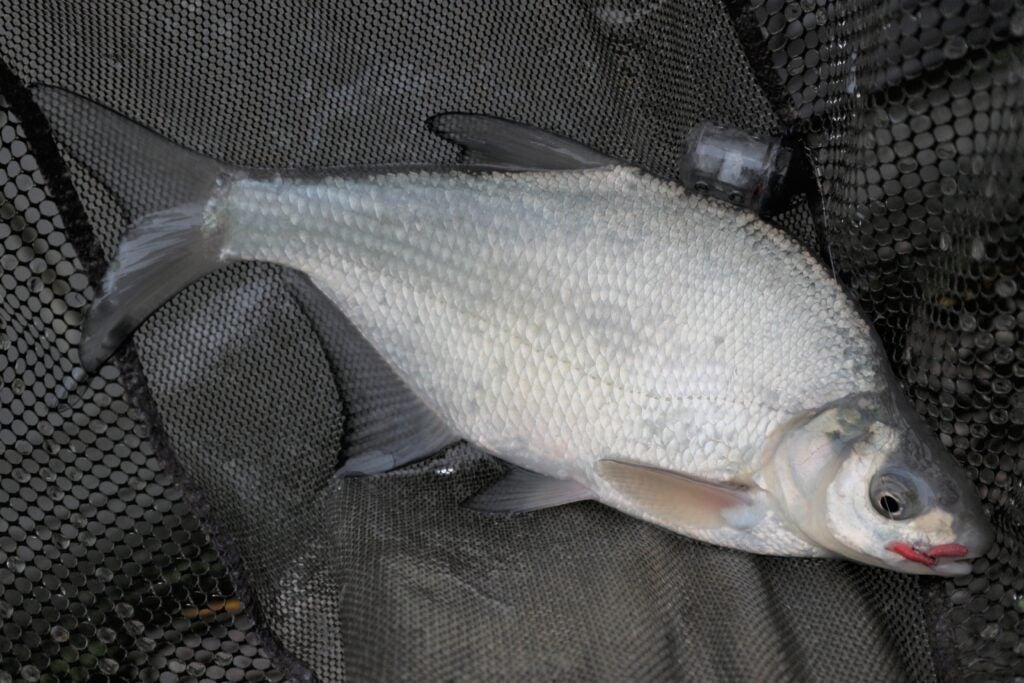
This perfect skimmer resulted. It fascinates me that fish like this can drive you mad in the depths of winter when using other methods, niggling at hook baits without ever taking them positively. But double red maggots presented a few inches away from a blockend made this one nearly pull the rod off its rest. I wasn’t even expecting this species in such chilly conditions, a day when most sensible people had stayed at home. A mate nearby using the long pole was struggling badly, missing a few ghost bites as I call them. Even a delicate-tipped float was being messed around by fickle fish. Not the case for me now my small maggot feeder had stirred things up. Next cast and my quivertip started dancing around again, so all I had to do was lift the rod and another nodding skimmer was on the way in. I was using a soft actioned 12ft feeder rod, combined with mono that had a bit of stretch and sinks quickly, finding braid too severe for this method.
SPECIES HUNTING
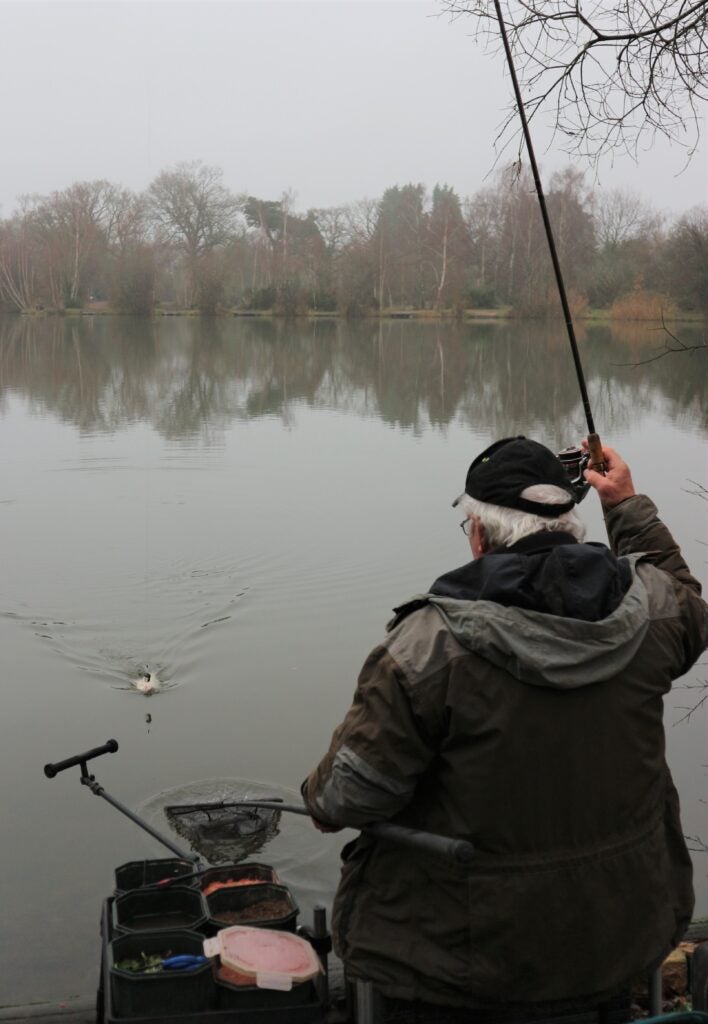
My reason for choosing the helicopter route was the quality roach that inhabit Woodland Waters, which had been starting to show recently. But for some strange reason skimmers muscled in on this occasion. Not a sign of a red fin yet, not that I was complaining because I didn’t expect to be this busy. The week previously in similar conditions I had fished a fixed waggler on this shallower bank of the Match Lake and struggled, only catching well as it got dark. This time around it was only ten o’clock in the morning and my swim had already come alive. Not all the takes were positive, however. Some were far more tentative and turned out to be caused by smaller, hand-sized skimmers. I still connected with these due to using a softer quivertip. With a much stiffer indicator normally associated with this method, they would probably have been missed. Before I refined things, hook baits would get mauled with no indication.
KEEPING WARM
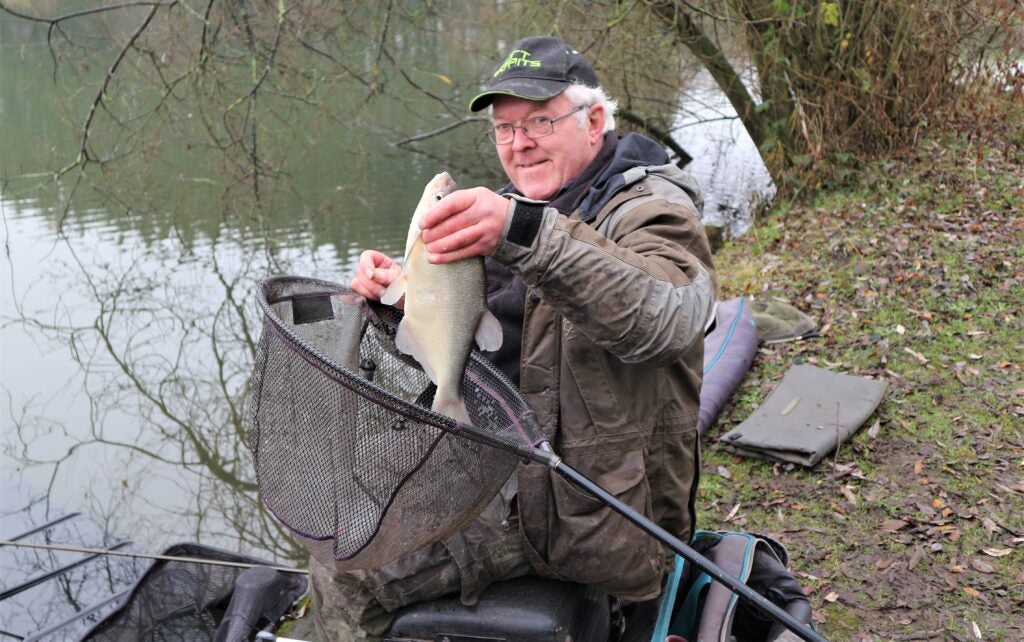
Not everything went my way during the busy winter session. I still managed to bump out of quite a few fish on the way in, despite using a 6 inch hook length, as opposed to a standard 4 inch one. Part of the problem I suspected was the eyed hook pattern, so next outing I switched to a more refined spade end design, coupled with 6 inches of fluorocarbon. Using pellet feeders during the warmer months, I had found fluorocarbon less tangle-prone because it’s a lot stiffer in nature, not tending to wrap around the end rig on the cast. Even more importantly, it’s more robust than low-diameter rig line, allowing spade end hooks to be used on short lengths, without fear of cutting through as fish thump against a close-set feeder. The change made a big difference, with far fewer lost fish, particularly soft-mouthed skimmers. A nice haul of these fish was boosted by a couple of decent bonus hybrids, rounding off a fruitful winter session.
MORE TWEAKING
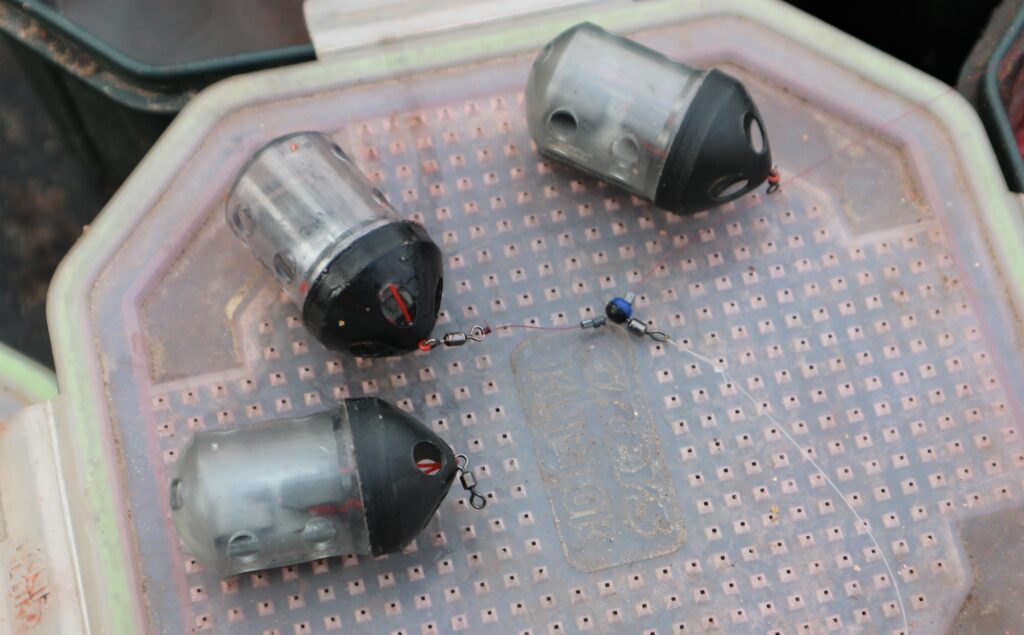
Returning a few days later to the bigger Specimen Lake, where the going had been even tougher during the continuing cold snap, I had another idea to try out. Instead of using firm grip rubber line stops, this time I locked a 6 inch fluorocarbon hook length and its attachment swivel bead, 3 cms above a small Kamasan 20g Black Cap, using number 9 Stotz weights. I firmly pinched two on below the swivel bead and only lightly fixed one above. I had been thinking hard about this part of the rig and how fish can shed the hook when hitting against the feeder on the way in. The two lower stopper weights were unlikely to move, but the single one above was deliberately less well anchored, so in theory it would slide up the main line as hooked fish buffeted the rig around. My intension this time was to strike at any indications because it was even colder. The other change I made was to use an even lighter 3/4oz carbon quivertip.
WORKING WELL
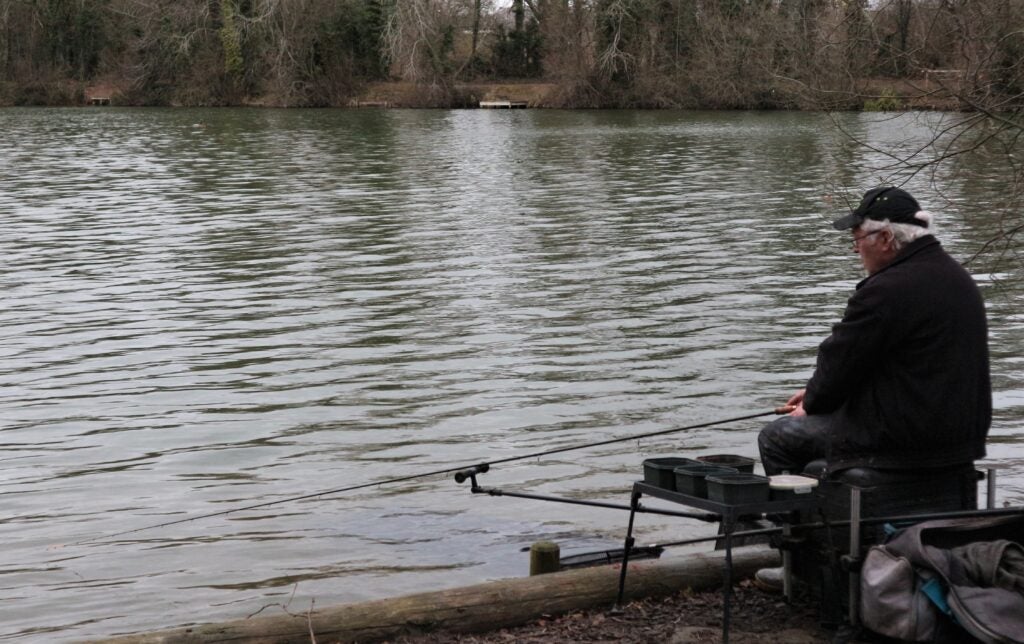
This new helicopter rig proved even better, moving further away from the bolt rig concept, but I had to wait the usual hour before I could find out. I kept casting new loadings of maggots into 14 feet of water every five minutes, around 30 metres out. Once again, not many other anglers were about and I understood why, with an icy wind in my face. Suddenly my quivertip did a little jig and lifting the rod into it, I felt something lively attached. No skimmer this time, with lots of darting movements. I gently coaxed the fish in and as it surfaced could see a nice plump roach. It became hectic again after that, using a size 16 barbless spade end hook to 5lb fluorocarbon. With a double red maggot offering dangling just below the feeder. There were no tangles, just loads of bites. Some were only slight, some were more positive, while others dislodged the light feeder. I was connecting with everything thanks to that sensitive quivertip.
BONUS TIME
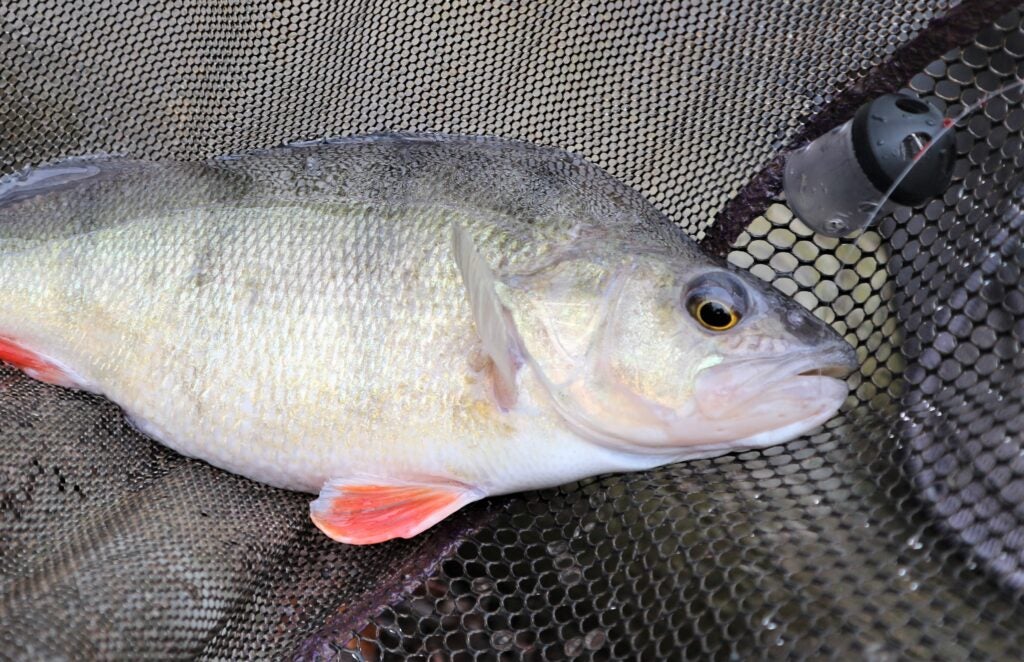
A flood of net roach followed, with none coming off on the way in, thanks to my slightly longer hook length and that crucial lightly nipped-on Stotz weight above the swivel bead. When anything bigger knocked hard against it, it moved up the main line, softening the hit. All I had to do before recasting was push the weight back down. A decent perch came next, really battering hard against my rod and the feeder, but the hook hold held well enough. That fish moved the small sliding locking weight even further, which meant it was doing a good job, leaving my end tackle almost free running. Some nice skimmers turned up next and once again, no problems with those soft-mouthed fish. A few anglers stopped by to watch, as everything seemed to be happening in my swim. I was too busy to feel the cold, even though I wasn’t getting any time to warm my hands in my pockets between casts. Who cares about winter when things go the right way!
FILLING UP
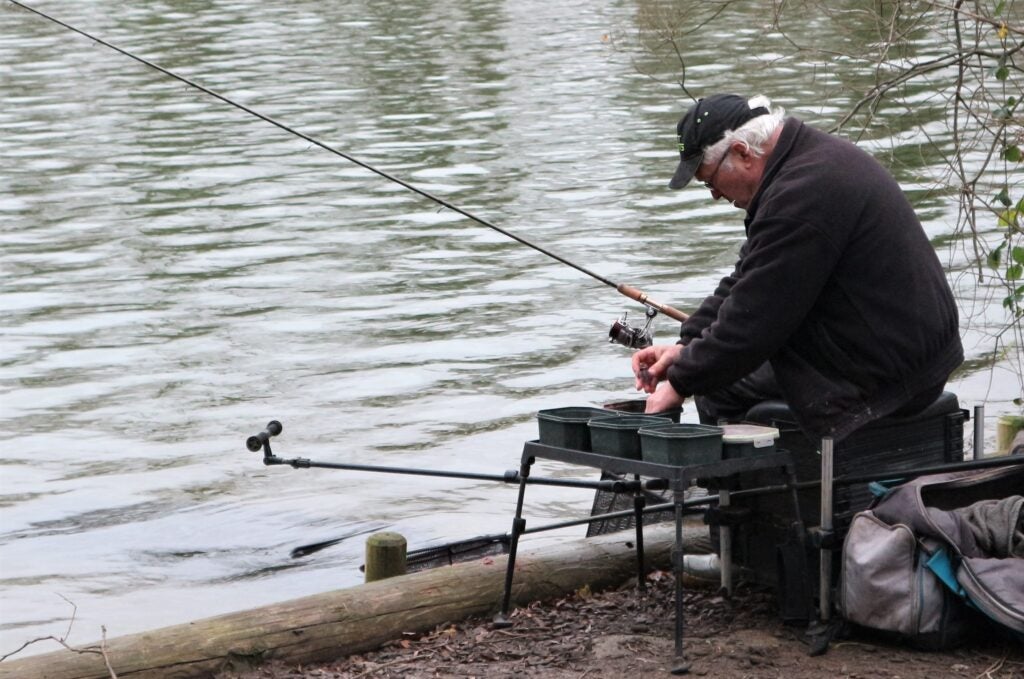
Pete the bailiff at Woodies originally put me onto this method and when he drops by he always has a look at where I’ve gone with it, sometimes shaking his head with disapproval. He likes targeting big fish, while I’m always happier getting loads of bites. I just like catching fish all day and if anything big turns up, it’s the icing on the cake. Pete swears the curry powder he flavours his maggots with makes a difference, but so far this winter I had forgotten all about that. But something I noticed when loading my feeder was if I put some maggot dust in, I seemed to gain bites even quicker. I wondered if the fish were homing in on the sawdust and maize particles as the floating bits exited and rose to the surface. The flavour thing didn’t seem to matter on this occasion, but it would be interesting to come back with curried maggots at some stage to compare the difference. Krill is another flavour I reckon could work well with this method.
BAGGING UP
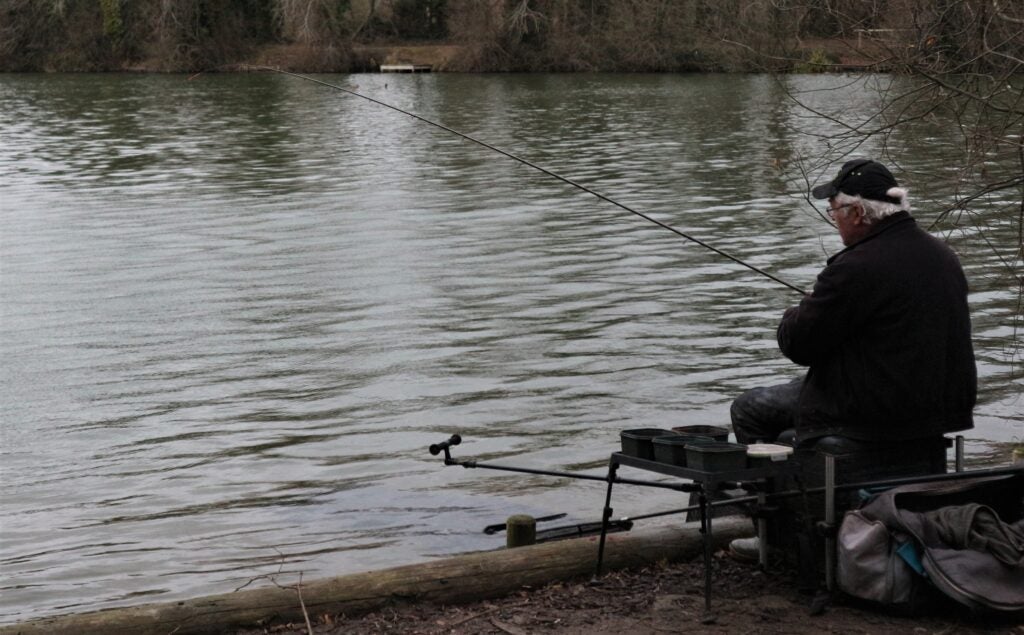
It always amazes me how fickle fish can be at this time of the year. I hardly caught a roach a few days previously on the other lake, which is joined by an inlet pipe, while on this normally more temperamental one they were suddenly the main takers. Plenty of net fish, with odd ones getting close to the one-pound mark, but no signs yet of the really big boys. It might be a bit early for them yet, but I’m hoping this will be a good year for those shadowy creatures, because there’s every chance of two-pounders turning up. I had hooked into a few heavier fish, but once again that ponderous thumping against the rod tip and feeder, signalled they were better-sized skimmers. I did experience a few quiet periods, where I suspect pike were the culprits. They tend to hang about in the big bay I was fishing, although it’s rare to have fish stolen off the hook. Keeping maggots going in regularly, it didn’t take long for the bites to come back.
MOVING FORWARD
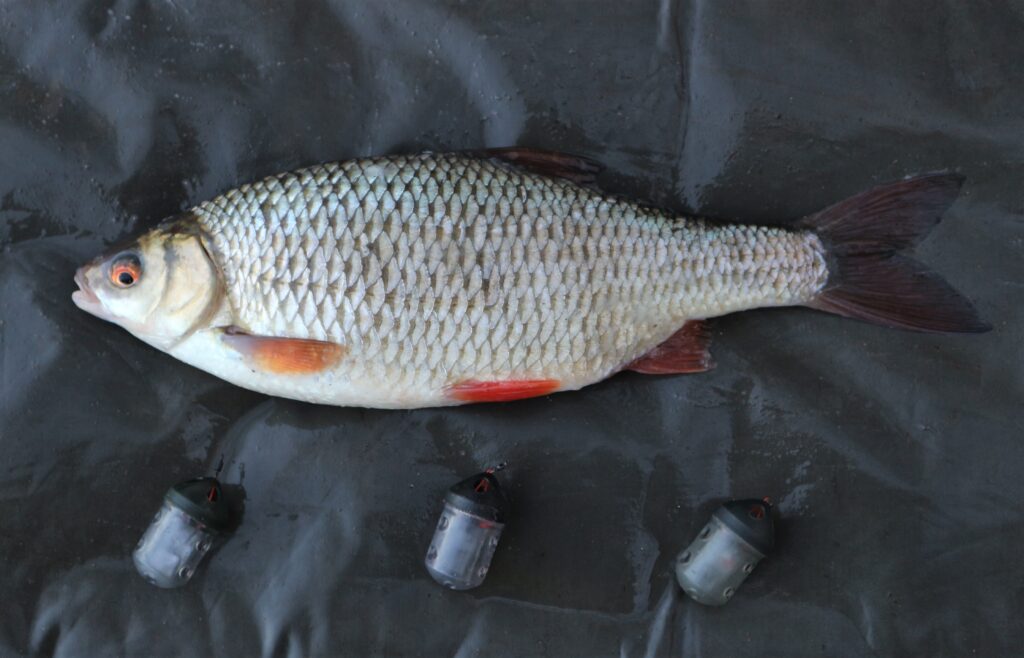
My refined rig saw just one fish come off all session. In total I netted over 30 roach, half a dozen skimmers and that perch for a brilliant day, especially considering it was January. All those little tweaks, using longer fluorocarbon links, a smaller, less obtrusive spade end hook, a relatively lightweight feeder, a much more sensitive quivertip, and that sliding upper stop shot made a massive difference. Instead of sitting like a garden gnome, I had to strike at most indications, but I like it that way with my rod always held. I go fishing to concentrate and get lost in what I’m doing. This new heli approach might result in lots more smaller fish, compared to the traditional specimen way, but that doesn’t mean it won’t catch proper lumps as well. In fact, I went back a few days later and enjoyed another nice haul of mainly roach, including the jumbo sample in the accompanying photograph. I’m going to stick with my new helicopter approach now.

